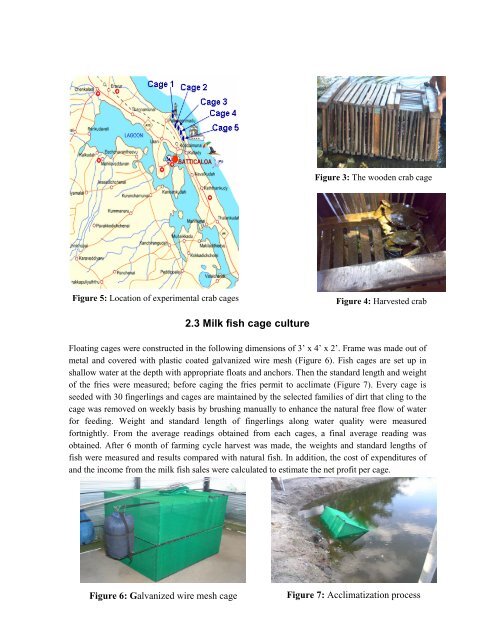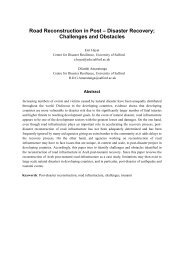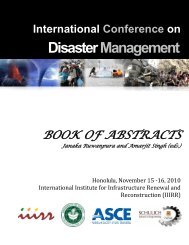Alternative resilient livelihood option for fisher-folks tsunami victims
Alternative resilient livelihood option for fisher-folks tsunami victims
Alternative resilient livelihood option for fisher-folks tsunami victims
Create successful ePaper yourself
Turn your PDF publications into a flip-book with our unique Google optimized e-Paper software.
Figure 3: The wooden crab cage<br />
Figure 5: Location of experimental crab cages<br />
Figure 4: Harvested crab<br />
2.3 Milk fish cage culture<br />
Floating cages were constructed in the following dimensions of 3’ x 4’ x 2’. Frame was made out of<br />
metal and covered with plastic coated galvanized wire mesh (Figure 6). Fish cages are set up in<br />
shallow water at the depth with appropriate floats and anchors. Then the standard length and weight<br />
of the fries were measured; be<strong>for</strong>e caging the fries permit to acclimate (Figure 7). Every cage is<br />
seeded with 30 fingerlings and cages are maintained by the selected families of dirt that cling to the<br />
cage was removed on weekly basis by brushing manually to enhance the natural free flow of water<br />
<strong>for</strong> feeding. Weight and standard length of fingerlings along water quality were measured<br />
<strong>for</strong>tnightly. From the average readings obtained from each cages, a final average reading was<br />
obtained. After 6 month of farming cycle harvest was made, the weights and standard lengths of<br />
fish were measured and results compared with natural fish. In addition, the cost of expenditures of<br />
and the income from the milk fish sales were calculated to estimate the net profit per cage.<br />
Figure 6: Galvanized wire mesh cage<br />
Figure 7: Acclimatization process

















